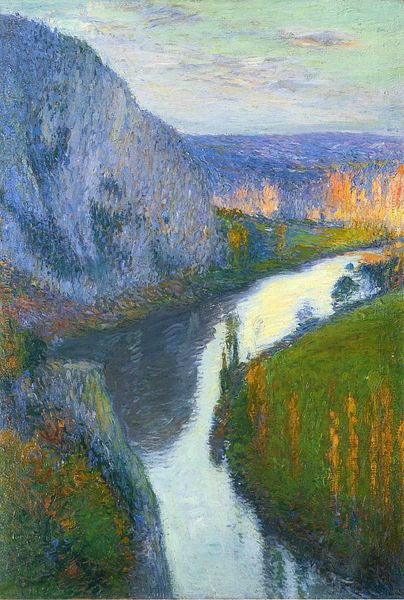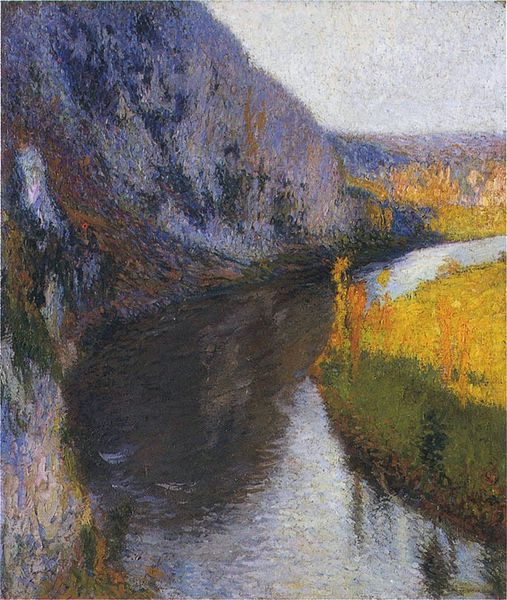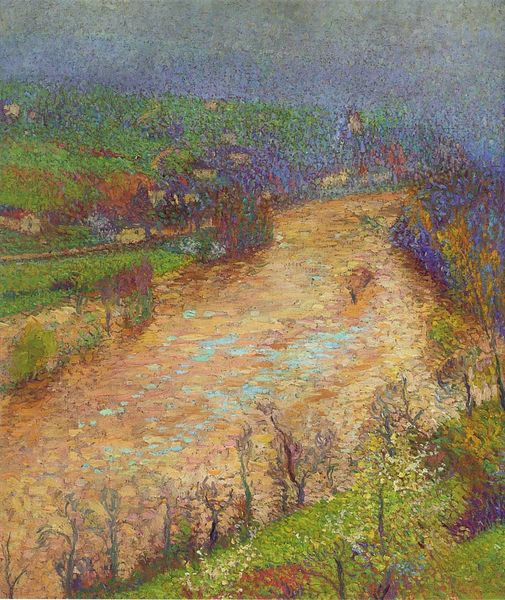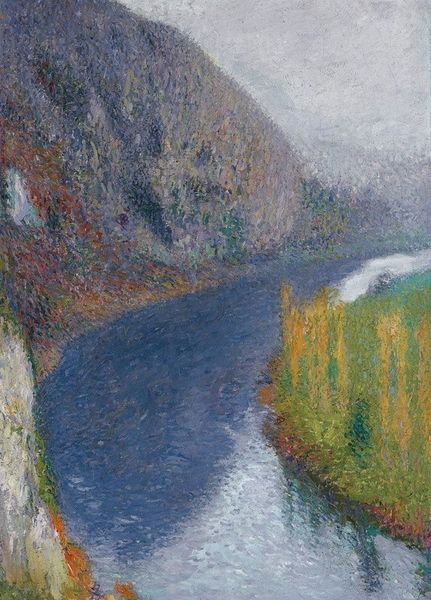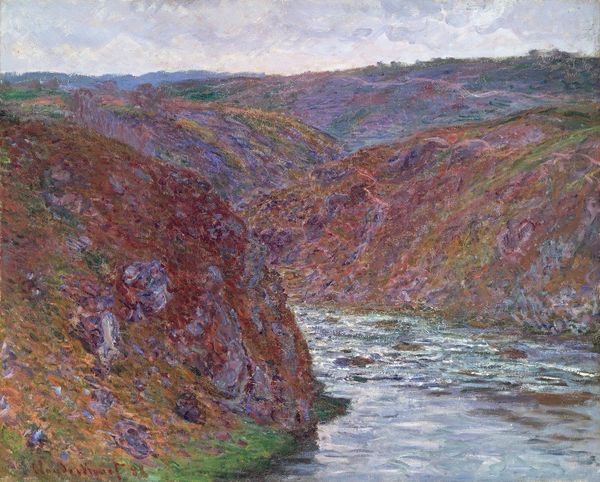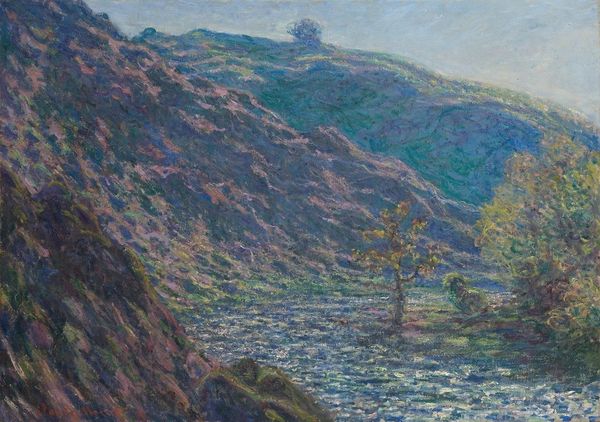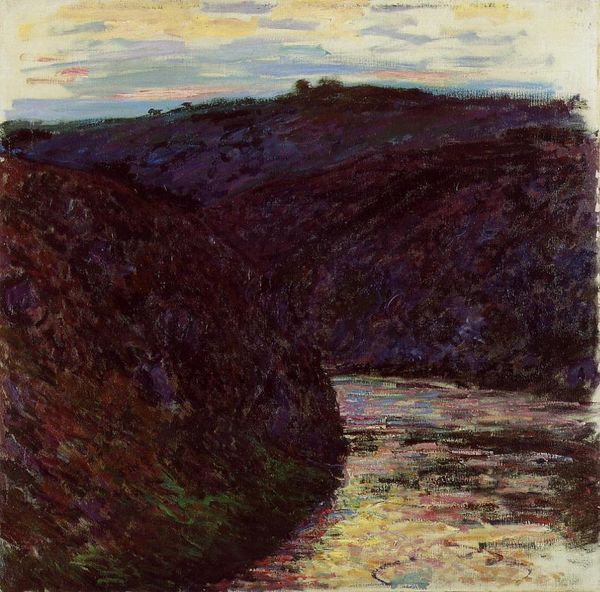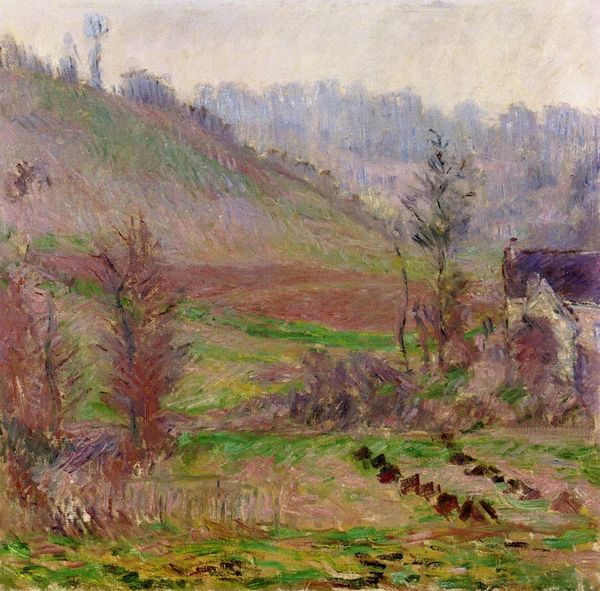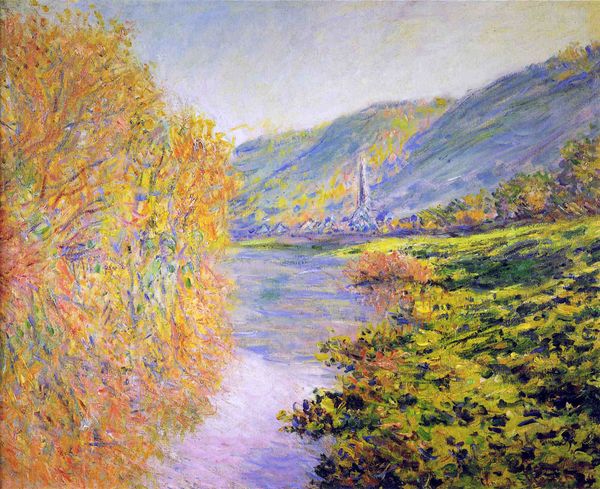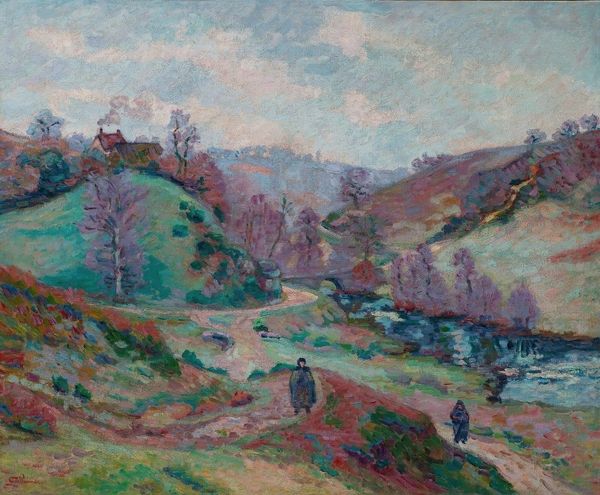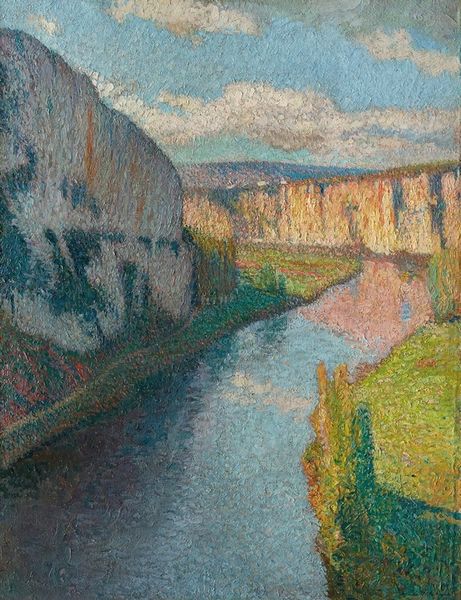
Copyright: Public domain
Curator: Othon Friesz painted this piece, Valley of the Creuse, Crozant, in 1901, likely en plein air given the impressionistic style. Editor: My initial reaction is that there is something melancholy about the diffused light and dominating gray, even though the scene depicts nature’s grandeur. Curator: It's interesting that you see melancholy. Friesz worked at a time when anxieties about industrialization and its effect on landscape were peaking. We could read this scene as a longing for an untouched space, free from societal impositions, a reflection of romantic ideals perhaps. Editor: That’s a point I considered. Looking at it again, there’s a sense of nature overpowering everything, as if resisting human encroachment. What about the brushstrokes? Are they typical for his period? Curator: He adopts the broken brushwork technique that characterized impressionism and romanticism. However, the palette is more subdued than typical impressionists, which heightens that solemn atmosphere you identified. Notice the impasto, it almost looks unfinished. This aligns Friesz to painters exploring fleeting moments and subjective experience. Editor: Exactly. I also find it crucial to consider the place, Crozant. In that era, what kind of role would have places like that served? I'm intrigued by what this choice of landscape, and particularly of Crozant itself, says about Friesz’s social and political values. Was there anything radical in his engagement? Curator: I would suggest that Crozant had been represented repeatedly throughout paintings across the Romantic period to that of the Impressionists due to its picturesque and “sublime” attributes. So there's a political nuance present simply by continuing a certain lineage. To your other points, seeing an untouched natural vista allowed those living through quick change an escape to nature as a source of refuge, though Crozant’s increasing reputation as a location for this could be seen as a commentary on capitalistic expansion into remote nature for the tourist gaze. Editor: This opens some fresh paths of thinking about Friesz and landscape's enduring value. Thanks for this walk through his "Valley of the Creuse." Curator: Absolutely. Looking at it through both the historical lens of Romanticism's nature ideals and the immediacy of Impressionism definitely complicates, and enriches, our viewing experience.
Comments
No comments
Be the first to comment and join the conversation on the ultimate creative platform.
